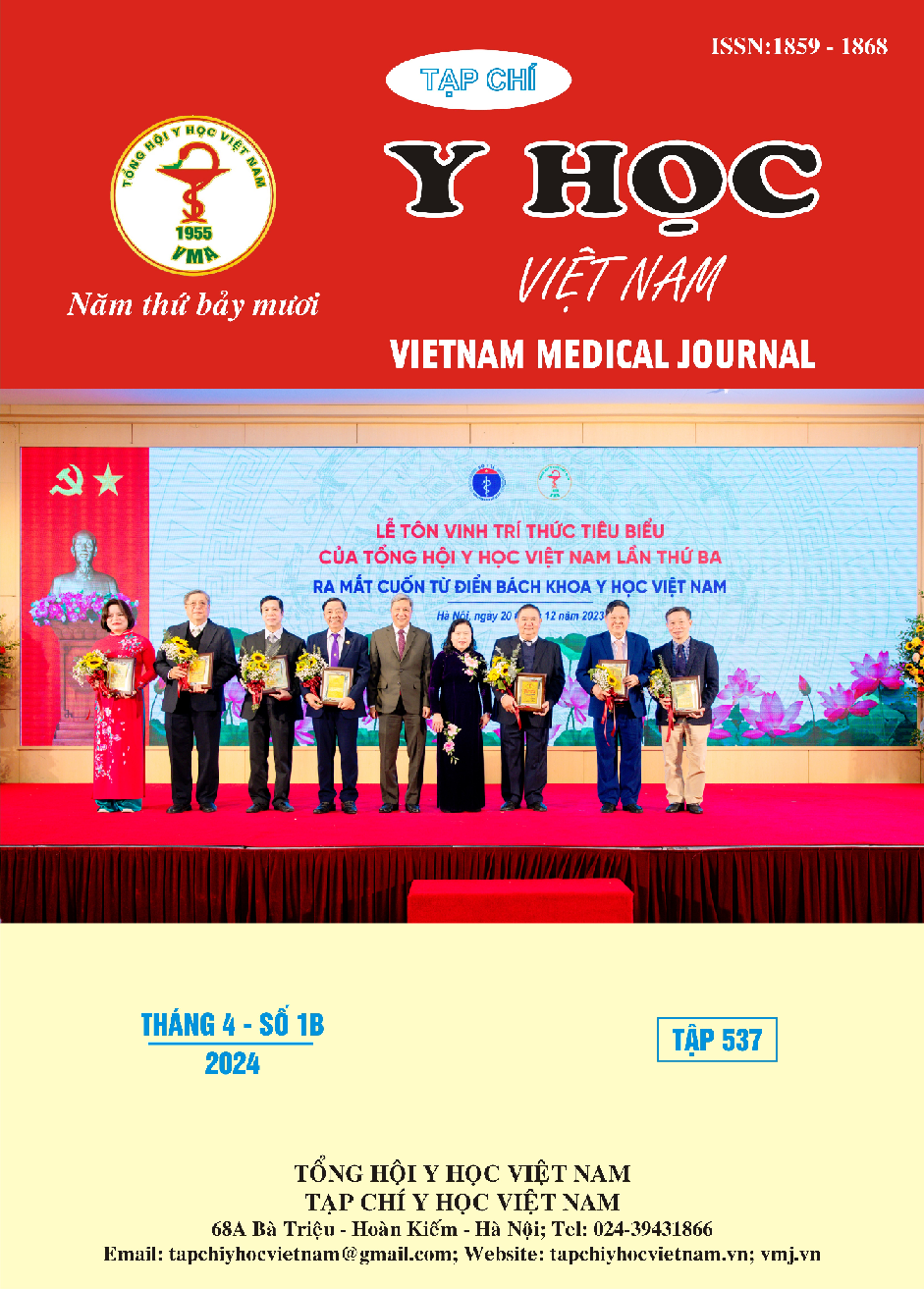KẾT QUẢ BƯỚC ĐẦU PHỤC HỒI CHỨC NĂNG ĐI TRÊN BỆNH NHÂN LIỆT NỬA NGƯỜI DO ĐỘT QUỴ NÃO TẠI BỆNH VIỆN PHỤC HỒI CHỨC NĂNG – ĐIỀU TRỊ BỆNH NGHỀ NGHIỆP NĂM 2022 – 2023
Nội dung chính của bài viết
Tóm tắt
Đặt vấn đề: Liệt nửa người sau đột quỵ não gây ảnh hưởng rất lớn và trực tiếp đến khả năng thực hiện các hoạt động sinh hoạt hàng ngày cũng như khả năng tái hội nhập vào đời sống cộng đồng. Mục tiêu: Đánh giá kết quả bước đầu phục hồi chức năng đi trên bệnh nhân liệt nửa người do đột quỵ não. Đối tượng và phương pháp nghiên cứu: Nghiên cứu cắt ngang trên tổng số 102 bệnh nhân liệt nửa người do đột quỵ não, điều trị tại Bệnh viện Phục hồi chức năng – Điều trị bệnh nghề nghiệp năm 2022 – 2023. Kết quả: Tuổi trung bình là 65,93 ± 9,71. Giới tính nam chiếm ưu thế với 69,6%. 45,1% bệnh nhân bị đột quỵ > 12 tuần, 88,2% đột quỵ lần đầu. 86,3% bệnh nhân là nhồi máu não. Sau 2 tuần điều trị, khả năng dồn trọng lượng lên chân liệt, vận tốc đi, nhịp bước đi, khả năng đi theo FAC đều có sự cải thiện (p < 0,05). Kết luận: Phục hồi chức năng đi lại cho bệnh nhân liệt nửa người do đột quỵ não mang lại hiệu quả đáng kể, giúp bệnh nhân cải thiện chức năng đi lại, giảm các thương tật thứ phát.
Chi tiết bài viết
Từ khóa
đột quỵ, phục hồi chức năng, vật lý trị liệu
Tài liệu tham khảo
2. Lê Xuân Dương, Phạm Quang Trình, Nguyễn Đức Ninh và cộng sự (2022), “Đặc điểm lâm sàng, cận lâm sàng 6.007 bệnh nhân đột quỵ não cấp tính, điều trị tại Khoa Cấp cứu, Bệnh viện Trung ương Quân đội 108, năm 2018-2019”, Tạp chí Y học Quân sự, Số 360 (2022), tr. 29 – 33.
3. Lê Minh Hải, Võ Thị Xuân Hạnh (2018), “Mức độ phục hồi chức năng vận động và chất lượng cuộc sống của bệnh nhân tai biến mạch máu não trước và sau điều trị phục hồi chức năng tại bệnh viện Phục hồi chức năng – Điều trị bệnh nghề nghiệp”. Tạp chí Y học TP. Hồ Chí Minh, Phụ bản tập 22, tr 320-326.
4. Lê Đức Hinh và nhóm chuyên gia (2008), Tai biến mạch máu não, Nhà xuất bản Y học, tr. 70 -75.
5. Phạm Thị Minh Nguyệt, Trần Văn Chương (2008), Đánh giá kết quả phục hồi chức năng đi lại và mối liên quan với cơ lực chi dưới ở bệnh nhân tai biến nhồi máu não vùng bán cầu, Luận văn thạc sĩ y khoa, Trường Đại học Y Hà Nội.
6. Vũ Thị Tâm, Lê Thị Tuyết Chinh, Vũ Thị Hồng Anh, Vi Thị Thập Lan (2021), “Khảo sát thực trạng bệnh nhân liệt nửa người do đột quỵ não tại bệnh viện Y học cổ truyền Cao Bằng”, Tạp chí Y học Việt Nam, Tập 498 (2), tr. 17 – 22
7. Chugh, C. (2019). Acute ischemic stroke: management approach. Indian journal of critical care medicine: peer-reviewed, official publication of Indian Society of Critical Care Medicine, 23(Suppl 2), S140.
8. Feigin, V. L., Stark, B. A., Johnson, C. O., Roth, G. A., Bisignano, C., Abady, G. G.,... & Hamidi, S. (2021). Global, regional, and national burden of stroke and its risk factors, 1990–2019: a systematic analysis for the Global Burden of Disease Study 2019. The Lancet Neurology, 20(10), 795-820.
9. Jerome G.J., Ko S., Kauffman D. và CS (2015). Gait Characteristics Associated with Walking Speed Decline in Older Adults: Results from the Baltimore Longitudinal Study of Aging. Arch Gerontol Geriatr, 60(2), 239–243.


